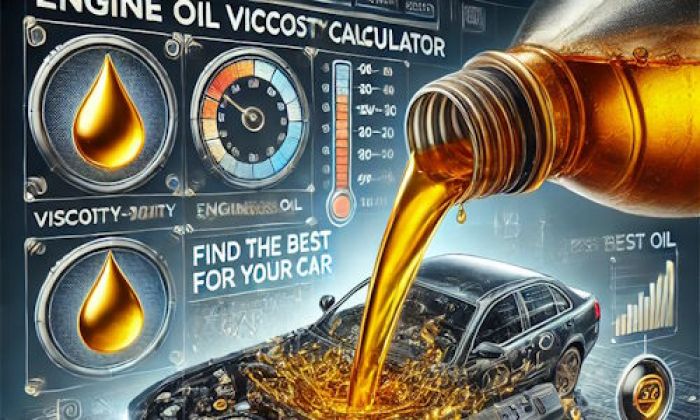Turbocharged engines have always been thought to be better than naturally aspirated ones. The reason is quite simple and clear - the power. Turbocharged engines are much more powerful and they can withstand higher loads. Without a turbo, any diesel engine will go properly. It will be a slow engine that can't tow perfectly and is not capable of accelerating the vehicle as it should.
Key features and my opinion about the engine
- Production years:1994-2003
- Average lifespan of 7.3 Power Stroke:380,000-450,000 miles
- Fuel supply type:direct injection
- Power range:250-275 hp
- Fuel efficiency:bad
- Engine block material:cast iron
- Engine reliability score:high
- The most common problems:electronics problems, wiring issues, pretty bad fuel economy.
.jpg)
What do we know about the 7.3 Power Stroke turbocharger?
This engine debuted in 1994 as the replacement for the older 7.3-liter diesel by Ford called IDI. The engine actually started the Power Stroke family of the diesel units and it was the largest one in the series. It was pretty technological in 1994, but today we see that those technologies were very simple and quite long-lasting. Though, they didn't ensure great fuel mileage.
The 7.3 Power Stroke was used in larger pickup trucks and also in Econoline vans. This engine is durable and cool to drive. It's not extremely powerful with only 250 horsepower but it offers wonderful torque of 505 lb-ft.
Here's what we know about the turbocharger:
- this is an extremely simple turbocharger that is single (no twin-turbo technology is used);
- the size of the turbo could have been much larger, but Ford didn't aim to make a powerful engine;
- in all versions after 1999, Ford used air-to-air intercoolers which made the turbo much more efficient;
- also, in 1999, Ford changed the construction of the turbine a little adding a Westgate unit with larger housing;
- the turbocharger was very durable and could actually go as long as the engine, but any mods and upgrades killed it very fast;
- the turbo is not the most efficient unit in this engine, but thanks to this part, the engine goes much better.
If you are considering any modifications to the turbocharger in your 7.3 Power Stroke, think twice. It's not the engine for sports driving, it's the workhorse that is going to carry you and some loads for decades asking for no repair or replacement. But once you interfere in the construction, it may just fall apart.
Yes, there are some turbo kits with twin turbochargers and more efficient options to use with the durable 7.3 Power Stroke engine. And you can buy and install them. But keep in mind that the expenses for a turbo kit for this engine will be about $4,500 or even more. Is it worth the money? We don't know, it's for you to decide.
How do I know that the turbo failed in my 7.3 Power Stroke?
You will certainly feel that something is wrong with the vehicle. First of all, the engine will not want to rotate as it should. You will press the gas pedal, but the giant under the hood of your vehicle will not react immediately. After some time, the engine will rotate, but you will not feel the power you will be expecting to feel.
Also, the sound may change. The engine may get more vibration because it is under a higher load. It will be hard to rotate the 7.3 Power Stroke over 2000 RPM because the turbine will not blow any air inside the combustion chambers.
Here are some of the main signs that the turbocharger is dead in your 7.3 Power Stroke engine:
- total power loss - you will feel that the car is not going to accelerate because it lacks power and torque;
- hard to rotate the engine - the RPMs don't go over the 2000 rotations mark, the vehicle doesn't accelerate properly;
- strange noise from the engine - the broken turbocharger may start rattling because of broken parts;
- vibration and noisier engine work - the vibration may become unbearable because this is a diesel engine;
- black smoke from the tailpipe - the oil from the turbocharger is burnt in the engine and this makes a lot of black smoke;
- low oil level - the oil will get burnt and it will reduce the oil level in the engine;
- check the engine light on the dash - it may or may not light up just because the self-diagnostics system is not the best one in the old Power Stroke.
Also, you will probably experience other problems with your big engine. Every engine may have its own symptoms of a broken turbocharger or a turbo that is going to be broken soon. We aren't sure if you can add something to this list.
But you should register all kinds of changes in the work of your engine. Once the 7.3 Power Stroke changes the way it works, you should get ready for diagnostics or even the repair. We can say that it's hard to overlook the problems with the turbocharger in your big diesel engine. You will certainly feel that something is wrong.
How long does the turbocharger in 7.3 Power Stroke live?
It's hard to say even the average lifespan of a turbocharger in your Power Stroke diesel engine. One owner says that the engine was used for 200K miles with no problems at all. Some other people disagree and say that they had a chance to replace the turbocharger at 100,000 miles.
But what we can say for sure, is if your 7.3 Power Stroke has already passed the 200,000-mile mark, you should get ready for some problems. The turbocharger cannot live longer than that.
But the construction of the 7.3 Power Stroke turbo is pretty good. It's a classic turbocharger that can easily be repaired unless it has fallen apart and needs to be replaced completely. We've seen these turbos going another 100,000 miles after repair.
Can you upgrade the turbo in your 7.3 Power Stroke?
Of course, upgrading the turbocharger in your old diesel engine is one of the options. When Ford was making this engine in 1994, engineers didn't know even a fraction of the technologies we have now available. So even a cheap turbo kit that has been specially developed for the 7.3 Power Stroke, will be more efficient and let you enjoy more power.
What's more, the engine will not lose its longevity and reliability. This bloc can hold much more than 250 horsepower. The only thing you will need to do to ensure the best efficiency is to tune the ECU for better power.
But you should also understand that the price of the turbocharger upgrade will not be low. Cheap kits are not always good enough. If you choose expensive kits and then go to a good repair shop, you will spend about $4,500 to upgrade the turbocharger in an old diesel engine. So, we would go with the stock turbocharger or a remanufactured version to save up some money.
How to prolong the life of the turbo in your engine?
If you want to drive your vehicle for years, you should maintain it properly. All heavy-duty engines are designed to withstand great loads but they still need good maintenance.
Here are some of the most important features:
- Never experiment with oil. Your turbocharger will need good oil to work properly.
- Don't overheat the engine, otherwise, the turbo will get hotter exhaust air and will fail.
- Change the air filter regularly to avoid air contamination.
- Check the turbocharger once a year to ensure it's still OK.
- Repair the turbo once you feel it's going to fail soon.
- Don't rev up your engine to the red points of the tachometer.
These are simple rules you will find useful if you want to make your turbocharger live longer. Also, these rules will make your engine show better durability and avoid failures. You should be still ready to repair the 7.3 Power Stroke if it has one of its common problems.
Final words
Today, we've discussed the problems with the turbocharger in your 7.3 Power Stroke engine. These problems may seem inevitable, but they are actually not. Even high-mileage Power Stroke engines sometimes feel good with the OEM turbochargers that haven't been repaired even once. Now you know about some symptoms of a failing turbo in the 7.3 Power Stroke diesel engine and you will not overlook the problem.
About the authors
The CarAraC research team is composed of seasoned auto mechanics and automotive industry professionals, including individuals with advanced degrees and certifications in their field. Our team members boast prestigious credentials, reflecting their extensive knowledge and skills. These qualifications include: IMI: Institute of the Motor Industry, ASE-Certified Master Automobile Technicians; Coventry University, Graduate of MA in Automotive Journalism; Politecnico di Torino, Italy, MS Automotive Engineering; Ss. Cyril and Methodius University in Skopje, Mechanical University in Skopje; TOC Automotive College; DHA Suffa University, Department of Mechanical Engineering






Add comment